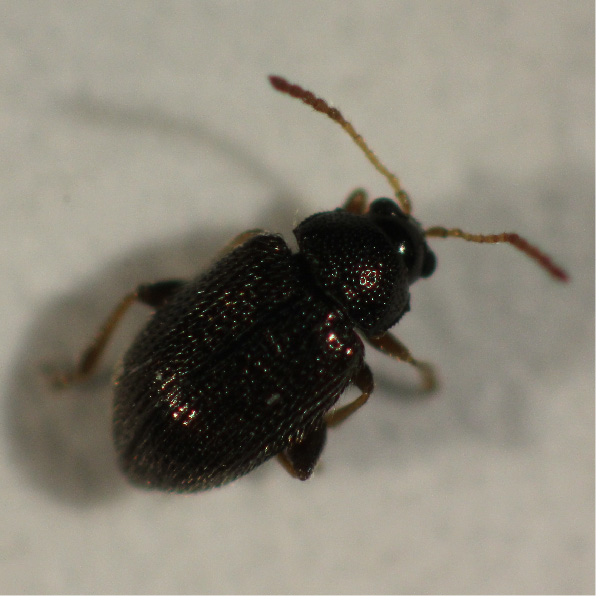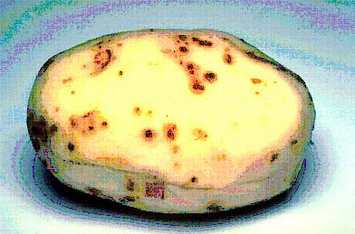North American flea beetles
Epitrix similaris, E. cucumeris, E. tuberis and E. subcrinita
Appearance

In North America, 4 Epitrix species are considered potato pests - E. tuberis, E. similaris, E. cucumeris, and E. subcrinita. Since these species cannot be distinguished in the field on the basis of easily recognizable characteristics, they are treated together below. Differentiation of each species may require dissection of genital organs.
Beetles: American potato earthworms are species a few millimeters in size that have jumping legs. The genus Epitrix is easily distinguished from other species of chiggers by its dark body coloration with yellowish antennae, as well as short hairs on the elytra.
Larvae: The larvae are whitish and slender. They grow up to 12 mm long and have a head capsule, three pairs of thoracic legs, and an anal shield at the posterior end.
Biology
In spring, the ground flea beetles seek out freshly sprouting potato plants. They feed on potato foliage for five to six days and then begin laying their approximately 200 eggs. To do this, the females lay groups of tiny oval, whitish eggs loosely in the soil near the plant. After three to 14 days, the larvae hatch. They feed on roots and potato tubers, on which they create tunnels running just below the skin. After three to four weeks, they pupate in a burrow near the tuber. After a short pupal dormancy of about four to ten days, a beetle hatches from it, which goes outside and feeds on the potato foliage. Thus, two to three generations of beetles occur each season. In autumn, the adult beetles seek out their hibernation quarters in leaf litter and shallow soil layers.
Damage symptoms


Adult beetles produce typical small feeding holes on the leaves. This damage is indistinguishable from the feeding holes of the European potato pea flea, Psylliodes affinis. The larvae of the American species produce feeding holes located just below the potato skin.
Host plants
The four North American Epitrix species can complete their development cycle on numerous wild and cultivated plants of the nightshade family. However, when food is scarce, the adult beetles also feed on plants of the goosefoot, cucurbit, and butterfly family without being able to reproduce.
Distribution
The beetles probably originate from western North America and occur northward to British Columbia. Previously, there were primarily only two species of earth flea on potatoes in Europe(Psylliodes affinis and Epitrix papa). These rarely caused damage to potato foliage. However, since 2004, novel damage to potato tubers has been observed in Portugal, and since 2008 also in Spain, apparently caused by potato earth fleas of the species E. cucumeris.
In addition, there are also three native Epitrix species in Central Europe, namely Epitrix atropae, E. intermedia, and E. pubescens, which are common on belladonna, henbane, and nightshade, but rarely feed on potatoes.
According to a climate simulation by EPPO, the American potato earthworm could become more widespread in Europe, especially in the Mediterranean and oceanic regions, but Austria would also be affected. So far, however, Austria has been spared from the novel potato earth fleas.
Prevention and control
The pest does not currently occur in Austria; an introduction should be prevented.
- Check table and seed potatoes for adhering soil residues originating from infested areas (Portugal and Spain). In these, pupal beetles could possibly be introduced.
- Plant protection products for the control of biting pests in potato cultivation (see list of plant protection products approved in Austria) can be used in the event of an infestation.
Specialized information
In mainland Europe, E. cucumeris and E. papa were first detected in Portugal in 2008 as causal agents of symptoms that had been known there for some time. All potato-growing areas in Portugal are now considered infested areas. The beetle has also spread to adjacent areas in northern Spain (Galicia and Asturias). Individual demarcated areas where the pest has been found are in the south of Spain in Andalusia.
Last updated: 11.09.2023
automatically translated